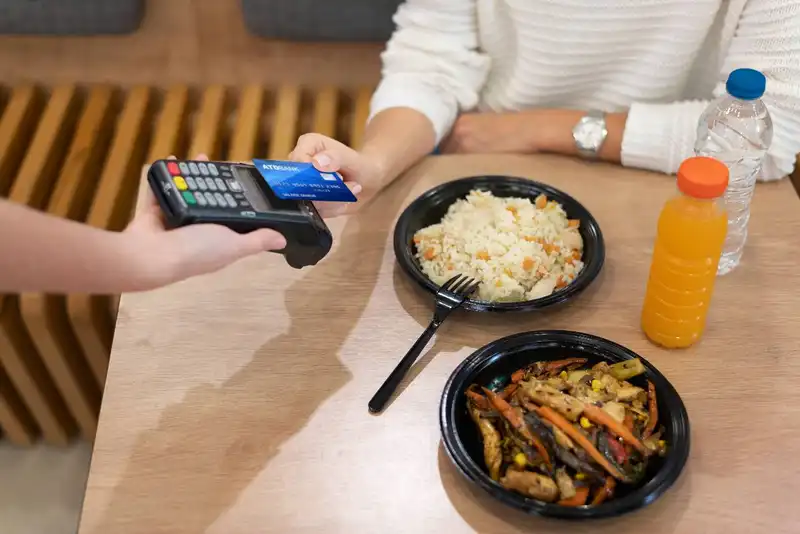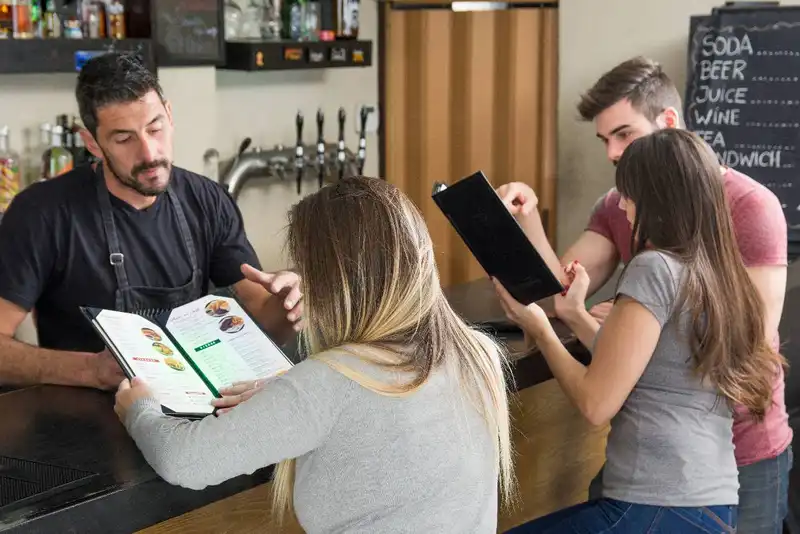How is tip out calculated?
Tip out can be calculated as a percentage of sales, a percentage of tips, or fixed amounts per shift. The method depends on the restaurant's structure, size, and culture.
What Does Tip Out Mean in Different Types of Restaurants?
Overview
Running a restaurant means balancing great customer service with fair and efficient staff management. One area that often creates confusion - or even tension - is how tips are distributed among team members. This process, commonly called "tip out," determines how servers share a portion of their tips with the support staff who help deliver a smooth dining experience.
For restaurant owners, understanding and managing tip out practices isn't just about keeping the team happy. It directly impacts staff morale, turnover rates, and even compliance with labor laws. When tip out is handled fairly and transparently, it fosters teamwork and ensures that every employee feels recognized for their contribution. When it's unclear or inconsistent, it can lead to disputes, frustration, and potential legal risks.
The challenge is that tip out practices are not the same everywhere. A casual dining restaurant may handle it very differently from a fine dining establishment, a bar, or a quick-service operation. Each type of restaurant has its own culture, pace, and structure - and that shapes how tips are shared.
The Basics

At its core, tip out is the process by which servers share a portion of their earned tips with other members of the restaurant team. While guests usually tip the person they interact with directly - most often the server or bartender - many behind-the-scenes roles play a critical part in the overall dining experience. Tip out ensures that these employees, who may not receive tips directly, are still rewarded for their contributions.
The roles typically included in a tip out system are bussers, food runners, bartenders, barbacks, and hosts. For example, bussers help turn tables quickly, runners ensure food arrives hot and correctly plated, and bartenders prepare drinks for the entire dining room. Without their support, servers would struggle to provide efficient service, which could negatively impact the guest experience and tip earnings.
Tip out can be structured in several ways -
1. Percentage of sales - Servers give a fixed percentage of their total sales to each support role.
2. Percentage of tips - A portion of the actual tips received is shared with others.
3. Fixed amounts - Some restaurants set a flat dollar amount per shift for certain roles.
The method chosen often depends on the restaurant's size, style, and culture. Regardless of the approach, the goal is to create fairness and reward teamwork. For restaurant owners, establishing clear guidelines is essential. A well-defined system prevents disputes, builds trust, and ensures every team member feels valued for their contribution to the guest experience.
Tip Out in Casual Dining Restaurants
Casual dining restaurants - think family-style establishments, mid-tier chains, or neighborhood eateries - tend to have straightforward but busy service structures. In these environments, tip out plays a crucial role in keeping service smooth and fair. Servers typically handle multiple tables at once, while bussers, hosts, and bartenders support the flow of the dining room. Since these support roles directly affect how quickly tables turn and how satisfied guests feel, they're often included in the tip out pool.
In most casual dining setups, servers tip out a percentage of their total sales, usually ranging between 2% and 4%. This amount is then split among bussers, bartenders, and sometimes hosts. For example, a server with $1,000 in sales may tip out $20 to the busser, $10 to the bartender, and $10 to the host. The exact breakdown depends on the restaurant's policy.
One of the biggest challenges in casual dining is maintaining transparency. With large teams and varying sales per section, disputes can arise if staff feel the system is unfair. Servers with slower sections might feel penalized, while high-volume servers may argue that they're giving up too much of their earnings.
For owners, the key is to establish clear, consistent rules and communicate them to staff. Leveraging POS systems to automatically calculate tip out percentages can reduce errors and arguments. By keeping the process fair and easy to understand, owners can maintain strong morale, minimize turnover, and ensure that every team member feels their contribution is recognized.
Tip Out in Fine Dining Restaurants
Fine dining restaurants have more complex service structures compared to casual dining, which naturally makes tip out practices more detailed. In these settings, a single table may be attended by multiple staff members- captains, servers, food runners, sommeliers, bussers, and bar staff. Because service is highly coordinated and labor-intensive, tip distribution typically involves more roles and larger percentages.
Instead of a simple 2-4% of sales model, fine dining restaurants often use tiered or pooled systems. For example, servers may contribute a percentage of their sales or tips into a shared pool that gets distributed among all service staff. It's not uncommon for support roles like food runners and bussers to receive higher percentages here than in casual dining, given the greater level of detail and attention required. Sommeliers may also be included, particularly in establishments with strong wine programs.
The main challenge for owners in fine dining is ensuring fairness across a larger, specialized team. A poorly managed tip out policy can quickly lead to tension if certain roles feel undervalued compared to others. Transparency is critical - staff need to understand not only how tips are divided but why the system is structured that way.
Using POS-integrated tip pooling systems can help standardize payouts and prevent disputes. Owners should also revisit tip out structures regularly to ensure they align with service expectations, legal requirements, and evolving team needs. A fair and consistent system in fine dining doesn't just reduce conflict - it reinforces the sense of teamwork that is essential to delivering a seamless, high-quality guest experience.
Tip Out in Bars

Bars have their own unique culture and pace, which directly impacts how tip out works. Unlike restaurants where servers are the main point of contact for guests, bartenders are often both the service providers and the face of the establishment. However, they rarely work alone. Barbacks, servers, cocktail servers, and sometimes even security staff all play a role in ensuring smooth operations. Tip out in this environment ensures that everyone who contributes to service gets a fair share of the rewards.
The most common practice in bars is for bartenders to tip out bar-backs, who handle behind-the-scenes tasks such as stocking, cleaning, cutting garnishes, and keeping supplies ready. A typical structure might involve bartenders giving 10-20% of their total tips to the bar-back. Servers who rely on the bar for drink orders may also tip out bartenders, often based on a percentage of drink sales. In nightclubs or high-volume bars, security staff may be included in the pool, especially if they play a role in maintaining customer safety and experience.
For owners, the challenge lies in balancing fairness with practicality. In busy bar environments, tips can accumulate quickly, and disputes may arise if roles feel under-compensated. Technology can help by tracking sales and automatically calculating contributions. But beyond numbers, communication is key. Making expectations clear, setting consistent rules, and explaining the reasoning behind the distribution system helps reduce tension.
Transform The Way You Manage Tips!
Manage and Distribute Tips Seamlessly with Altametrics
Tip Out in Quick-Service and Fast-Casual Restaurants
Quick-service and fast-casual restaurants traditionally haven't relied heavily on tipping systems, since the model emphasizes speed, counter service, and limited table interaction. However, the rise of digital payment systems and tablet-based ordering has changed customer behavior. Many guests now see prompts to leave tips at checkout kiosks or when paying with a card, even in fast-casual settings. As a result, tips are becoming more common in this segment, and owners are faced with the question of how to distribute them fairly.
Unlike casual or fine dining, where servers typically collect tips and then tip out support staff, quick-service restaurants often adopt a pooled system. This means all tips collected throughout a shift are combined and then distributed evenly among staff, usually based on hours worked. For example, if $300 in tips is collected in a day and three employees each worked equal hours, each might receive $100. If one person worked a shorter shift, their share would be adjusted proportionally.
The main considerations for owners here are fairness and compliance. Since these tips often come through digital systems, wage laws may restrict how they can be distributed, especially if management is involved in handling them. Additionally, owners need to decide whether back-of-house staff, such as kitchen employees, are included in the pool - a growing topic as tipping expands beyond traditional roles.
By keeping policies transparent and using POS integrations to automate distributions, owners can ensure staff remain motivated without unnecessary disputes. Even in fast-casual or quick-service environments, a clear and consistent tip out system can help create a more engaged and cooperative team.
Key Factors That Influence Tip Out Policies
While tip out structures vary by restaurant type, several universal factors shape how owners should design and manage their policies. Understanding these influences helps create systems that are fair, compliant, and effective across different settings.
1. Labor laws and compliance
Tip out policies must align with federal, state, and local labor laws. In many regions, for example, managers and supervisors cannot legally participate in tip pools. Some jurisdictions also regulate whether back-of-house employees can share in tips. Non-compliance can lead to costly fines and legal disputes, making it critical for owners to stay informed about the latest requirements.
2. Technology and POS systems
Modern POS systems allow owners to automate tip calculations, ensuring accuracy and transparency. Instead of servers manually calculating percentages at the end of a shift, the system can distribute tips instantly based on pre-set rules. This reduces errors, prevents disputes, and saves time during closing.
3. Transparency and communication
Employees are more likely to accept a system when they understand how it works. Posting written policies, reviewing them during on-boarding, and encouraging open dialogue reduces confusion and builds trust.
4. Fairness vs. performance
Owners must decide whether tip outs should be distributed equally or based on performance metrics like sales volume. Striking the right balance prevents resentment while still rewarding effort.
By considering these factors, restaurant owners can design tip out policies that not only comply with regulations but also strengthen teamwork and staff morale across any type of establishment.
Creating a Tip Out Policy That Works for Your Restaurant
Tip out is more than just a way to share earnings - it's a reflection of how your restaurant values teamwork, fairness, and efficiency. Across different types of restaurants, from casual dining to fine dining, bars, and quick-service operations, the approach may vary, but the goals remain the same- ensure compliance, maintain transparency, and reward every team member for their contribution.
For restaurant owners, the challenge is creating a system that works for your specific operation while minimizing errors, disputes, and time-consuming calculations. Clear guidelines, consistent communication, and leveraging technology are key to making tip out manageable and effective.
This is where Altametrics can make a real difference. With their robust workforce management and labor solutions, Altametrics simplifies tip tracking, automates tip out calculations, and ensures compliance with labor laws - all in one platform. By integrating tools like Altametrics, you can save time, reduce errors, and focus on what matters most- running a smooth, profitable restaurant while keeping your team motivated and fairly compensated.
Take control of your restaurant's tip out process today - explore how Altametrics can streamline your operations and give your team the clarity and fairness they deserve by clicking "Request a Demo" below.
Must-Read Content



What Is a Tip Out and How to Create a Fair System for Your Restaurant Team










